NOTICE: Folio Investing is now closed as of January, 2021, with the option to transfer your account to Interactive Brokers. I compared M1 Finance and Interactive Brokers here.
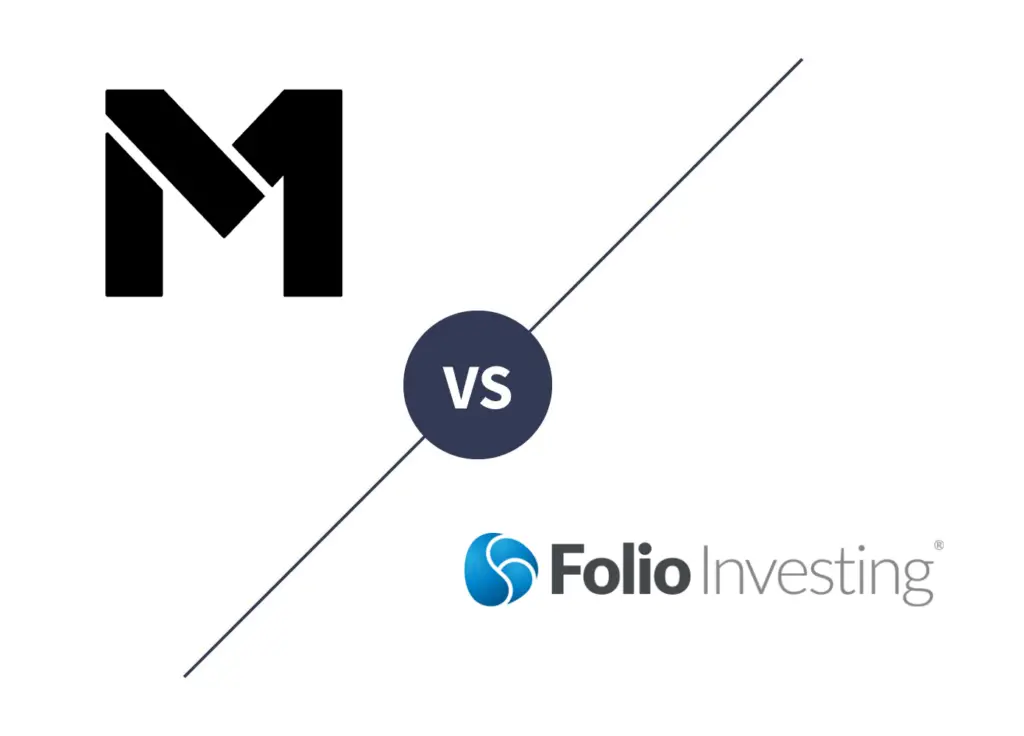
M1 Finance and Folio Investing use “pies” and “folios” respectively, allowing granular control of investment selection and allocation. Here we'll compare the two platforms. I wrote a separate comprehensive review of M1 Finance here if you're interested in seeing the specifics of the platform.
Disclosure: Some of the links on this page are referral links. At no additional cost to you, if you choose to make a purchase or sign up for a service after clicking through those links, I may receive a small commission. This allows me to continue producing high-quality, ad-free content on this site and pays for the occasional cup of coffee. I have first-hand experience with every product or service I recommend, and I recommend them because I genuinely believe they are useful, not because of the commission I get if you decide to purchase through my links. Read more here.
M1 Finance vs. Folio Investing – Summary Comparison
Contents
M1 Finance vs. Folio Investing – Commissions and Fees
M1 Finance has commission-free trades and zero account fees.
Folio Investing has 2 different plans with commissions and fees as follows:
- Folio Investing Basic Plan:
- $4 trade commissions
- $10 fee per order
- $5/mo. account fee for accounts with fewer than 3 trades per quarter (3-month period)
- Folio Investing Unlimited Plan:
- 2,000 commission-free trades per month, and $0.50/trade after that
- $3 fee per order
- $29/mo. account fee
Both platforms have the usual miscellaneous fees for things like paper statements, outbound transfers, etc.
M1 clearly wins out on fees.
M1 Finance vs. Folio Investing – Account Types
M1 Finance offers Individual, Joint, Traditional IRA, Roth IRA, Rollover IRA, SEP IRA, Trust, and Custodial (M1 Plus members) accounts. They currently do not offer SIMPLE IRA, 401(k), Solo 401(k), 529, HSA, or Non-Profit accounts.
Folio Investing has basically most account types you can think of. They offer all of M1's account types plus SIMPLE IRA, Beneficiary IRA, Business accounts, and more specialty accounts.
If you need any of the latter accounts, Folio Investing would be the better choice.
M1 Finance also offers an optional FDIC-insured checking account. Folio Investing does not offer a checking account.
M1 Finance vs. Folio Investing – Investment Products
Both M1 Finance and Folio Investing offer most ETF's and individual stocks that are traded on major exchanges.
Folio also offers some no-load mutual funds.
Neither platform has forex, crypto, options, futures, and over-the-counter (OTC) stocks aka “penny stocks.”
M1 Finance vs. Folio Investing – Margin
M1 Finance wins on margin rates. Margin rates are as follows for a $100,000 margin loan:
- Folio Investing – 5.75%
- M1 Finance – 3.50%
- M1 Plus – 2.00%
M1 Plus is a $125/year premium membership that gets you access to a lower margin rate as shown, as well as a second afternoon trading window.
You can use that cheap margin loan from M1 Finance for whatever you want – major purchases, refinancing higher-interest debt, unexpected expenses, etc.
M1 Finance vs. Folio Investing – Mobile App
M1 Finance has a sleek, intuitive, user-friendly, robust mobile app for both Apple iOS and Android:
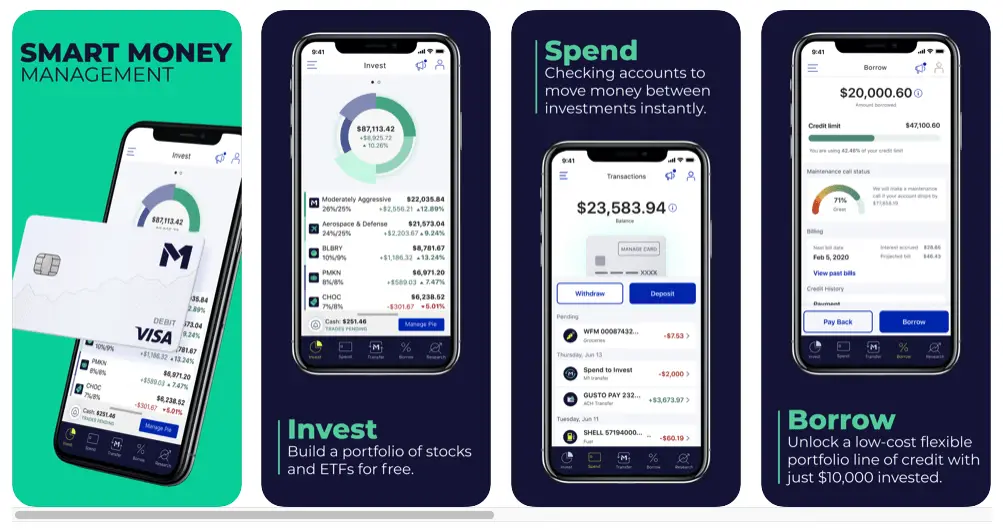
Folio Investing's mobile app, called FolioFirst, is notoriously bad according to user reviews complaining of it being cumbersome, antiquated, and buggy. Here are some screenshots of it:
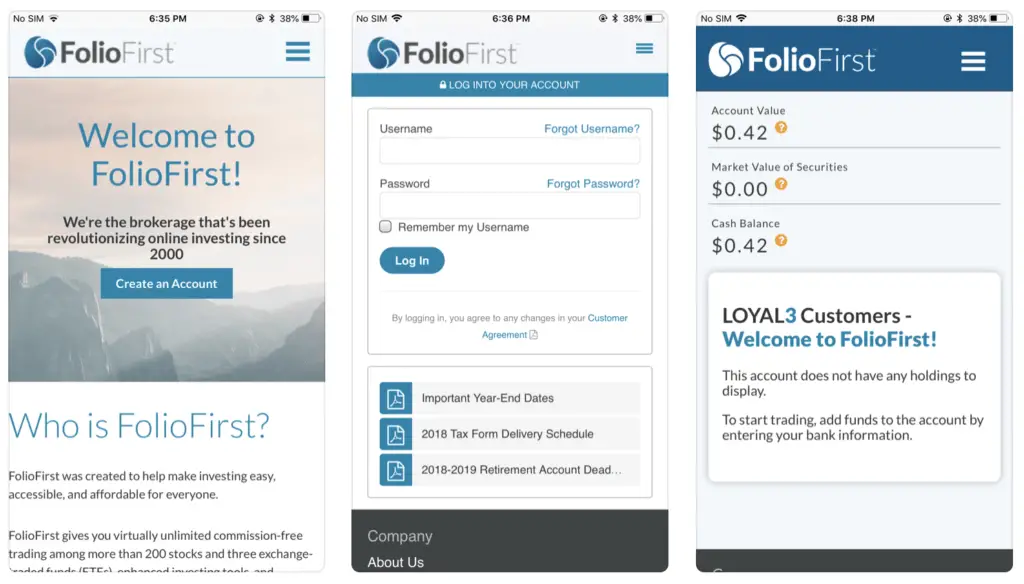
M1 Finance vs. Folio Investing – Interface/Usability
Like the app, the Folio Investing desktop web interface is still somewhat antiquated. The Folio user interface looks like this:
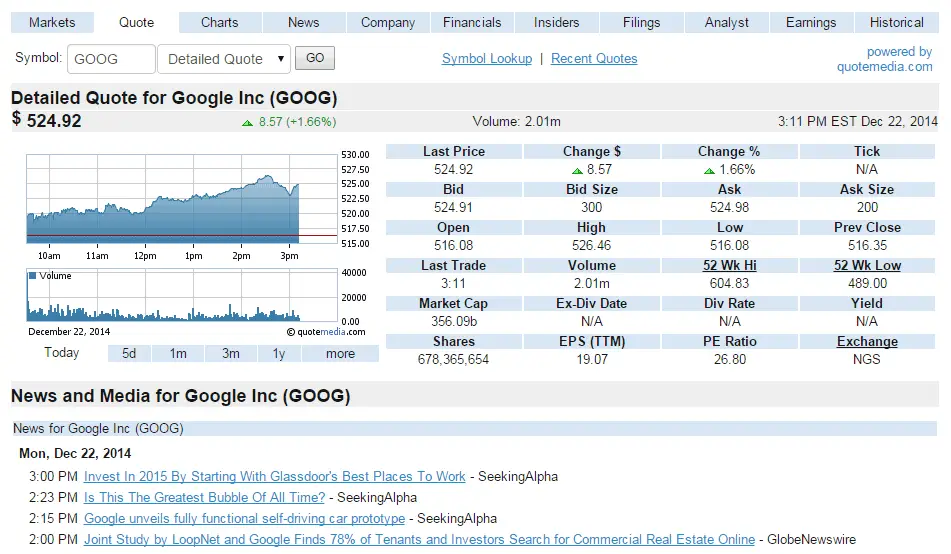
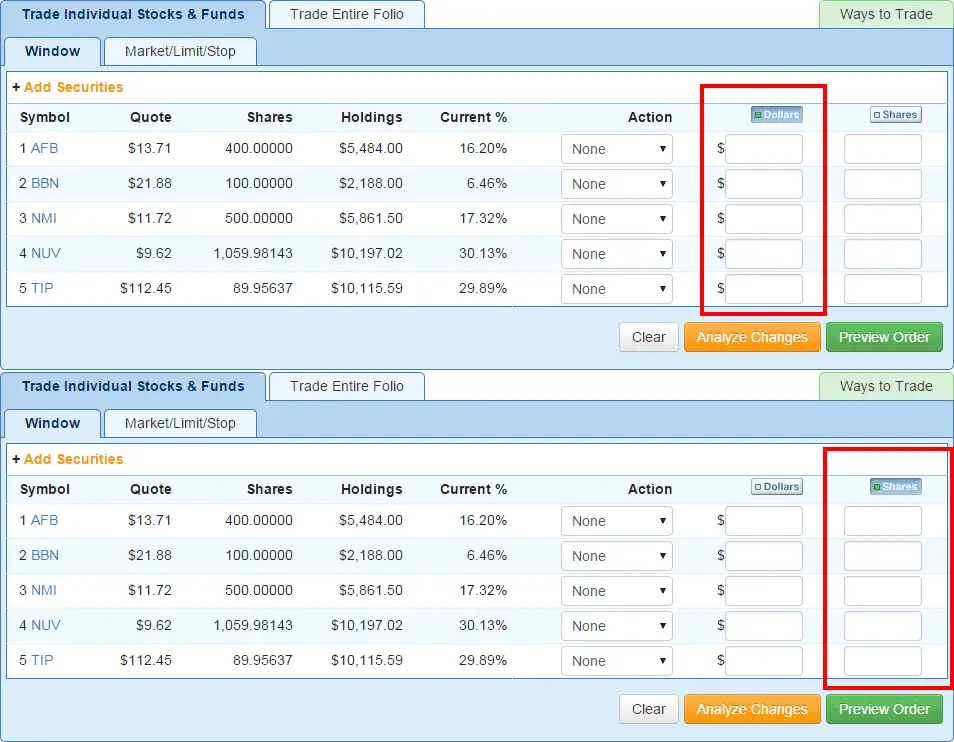
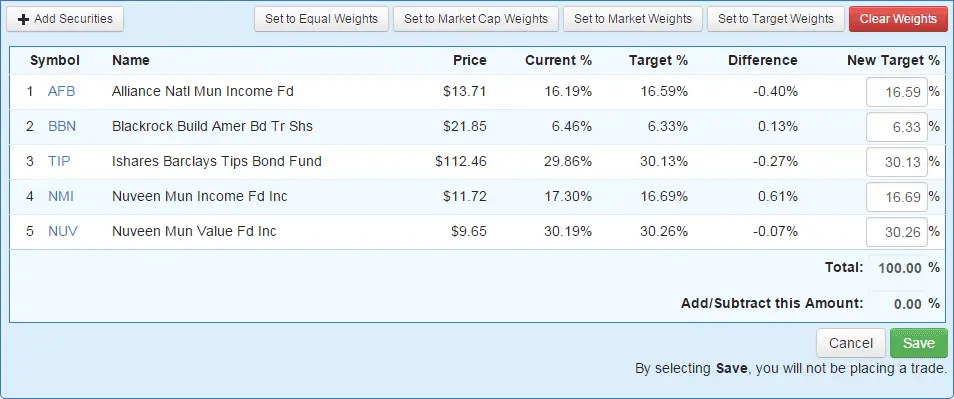
The M1 Finance interface is modern, simple, and intuitive with its pie-based visualization. It is great for novice and experienced investors alike:
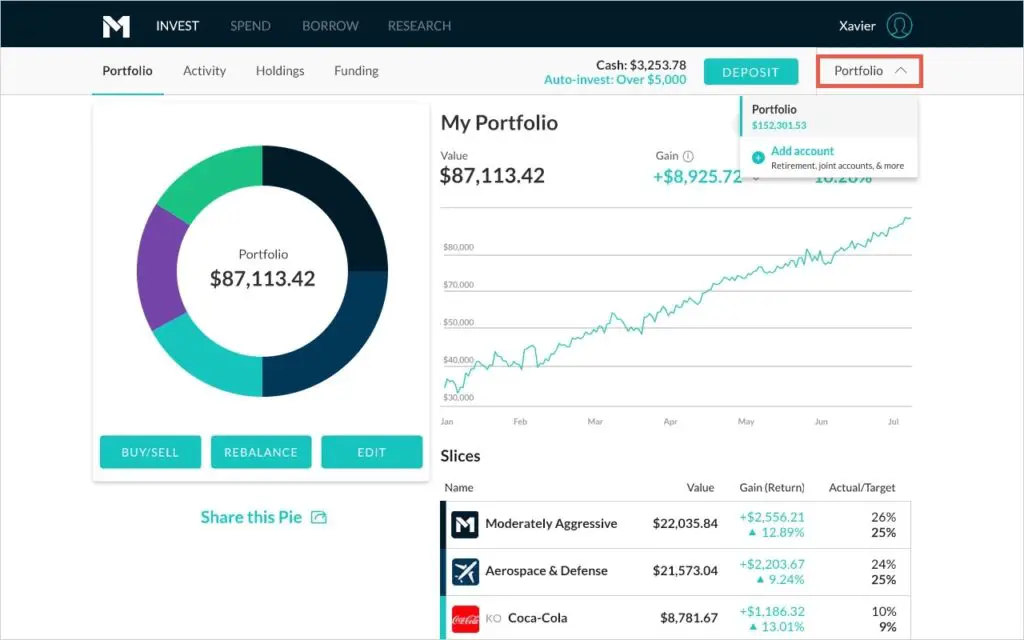
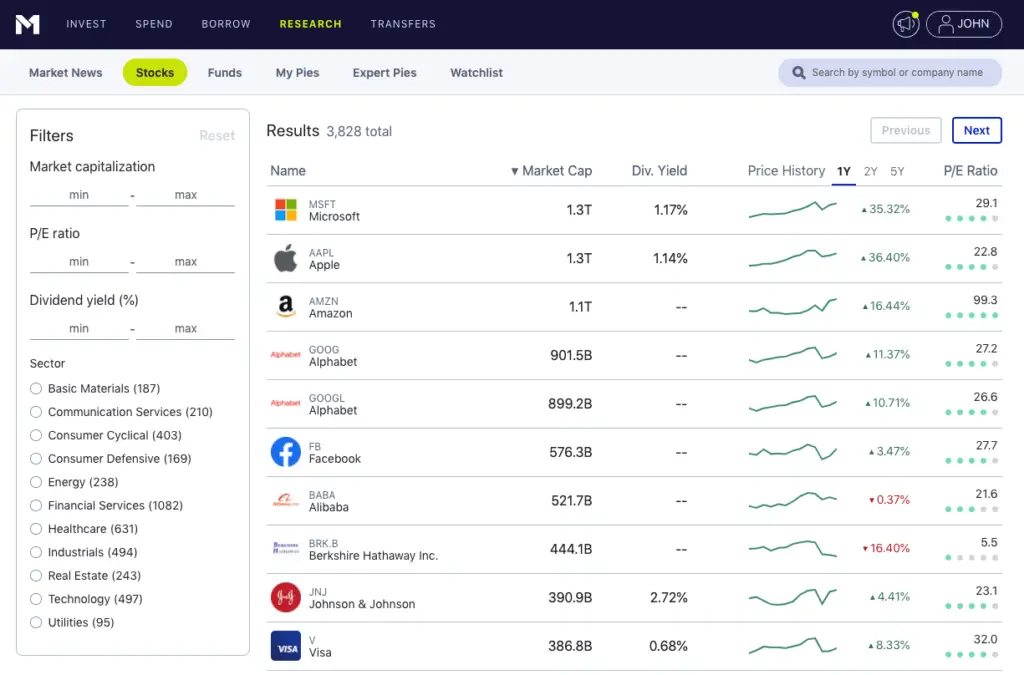
M1 Finance vs. Folio Investing – Extra Features
Since it's better suited for day trading, Folio Investing has a few more research tools than M1. Folio obviously has an all-day trading window and order control. Since M1 Finance is built for long-term, buy-and-hold investing, and not for day trading, M1 has a once-daily trading window and no order control.
Both M1 Finance and Folio Investing allow full portfolio customization. M1 calls them “pies” and Folio calls them “folios.” Both platforms offer pre-built expert portfolios and target date funds in which you can invest. M1 Finance calls theirs “Expert Portfolios” and Folio Investing calls theirs Ready-to-Go Folios™ or “RTGs.”
Both M1 Finance and Folio Investing feature automatic rebalancing – this feature automatically directs new deposits to specific assets to maintain your portfolio's target asset allocation.
Both M1 Finance offer fractional shares for all investment products, which allows every dollar to work for you and allows you to buy small pieces of high-share-price stocks. This is especially important for beginner investors with a small amount of capital.
M1 Finance also brings a cool social aspect to investing, allowing you to share your Custom Pies via a hyperlink.
M1 Finance vs. Folio Investing – Summary and Conclusion
- M1 Finance offers zero-commission trades and zero account fees. Folio has various order fees, account fees, and commissions that are higher than most.
- Folio has a few more account types than M1 Finance, but I'd imagine most average retail investors won't need or utilize that difference.
- Both M1 Finance and Folio Investing offer most ETF's and individual stocks. Folio also offers some no-load mutual funds.
- M1 Finance offers much lower margin rates than Folio Investing.
- Folio Investing has a more antiquated desktop web user interface. M1 Finance has a simple and intuitive desktop interface.
- Folio Investing has an antiquated, unintuitive, and buggy mobile app. M1 Finance has a sleek, modern, user-friendly mobile app.
- Both M1 Finance and Folio Investing offer fractional shares, automatic rebalancing, and dividend reinvestment.
- Folio Investing has the typical order control and all-day trading window that we'd expect from a traditional brokerage platform. M1 does not offer order control and only uses one trading window per day.
- Both M1 and Folio feature pre-built portfolios, respectively called “Expert Pies” and Ready-to-Go Folios™.
- M1 Finance brings a social aspect to investing, allowing you to share your Custom Pies (such as a lazy portfolio) via a hyperlink.
Your choice between these two platforms should depend on how you want to invest and what account types you need, since they have largely the same investment products and features. Folio Investing was one of the first on the scene with fractional investing and customized portfolios, but they haven't innovated much since then. Their fees and commissions are pretty obnoxious in my opinion for a modern broker, and they have a notoriously bad mobile app and a lacking interface. I would suggest only going with Folio if you absolutely need access to their additional account types and order control. Otherwise, I believe M1 Finance is clearly the better choice and is likely the closest alternative to Folio Investing with its pie-based visualization and customization. I wrote a separate comprehensive review of M1 Finance here if you're interested in seeing the specifics of the platform.
Update May 15, 2020: Folio Investing has entered an agreement to be acquired by Goldman Sachs, the closing of which is expected to take place in Q3 2020.
M1 currently has a promotion for up to $500 when initially funding an investment account:
Disclaimer: While I love diving into investing-related data and playing around with backtests, this is not financial advice, investing advice, or tax advice. The information on this website is for informational, educational, and entertainment purposes only. Investment products discussed (ETFs, mutual funds, etc.) are for illustrative purposes only. It is not a recommendation to buy, sell, or otherwise transact in any of the products mentioned. I always attempt to ensure the accuracy of information presented but that accuracy cannot be guaranteed. Do your own due diligence. I mention M1 Finance a lot around here. M1 does not provide investment advice, and this is not an offer or solicitation of an offer, or advice to buy or sell any security, and you are encouraged to consult your personal investment, legal, and tax advisors. All examples above are hypothetical, do not reflect any specific investments, are for informational purposes only, and should not be considered an offer to buy or sell any products. All investing involves risk, including the risk of losing the money you invest. Past performance does not guarantee future results. Opinions are my own and do not represent those of other parties mentioned. Read my lengthier disclaimer here.

Are you nearing or in retirement? Use my link here to get a free holistic financial plan from fiduciary advisors at Retirable to manage your savings, spend smarter, and navigate key decisions.
Don't want to do all this investing stuff yourself or feel overwhelmed? Check out my flat-fee-only fiduciary friends over at Advisor.com.


Leave a Reply